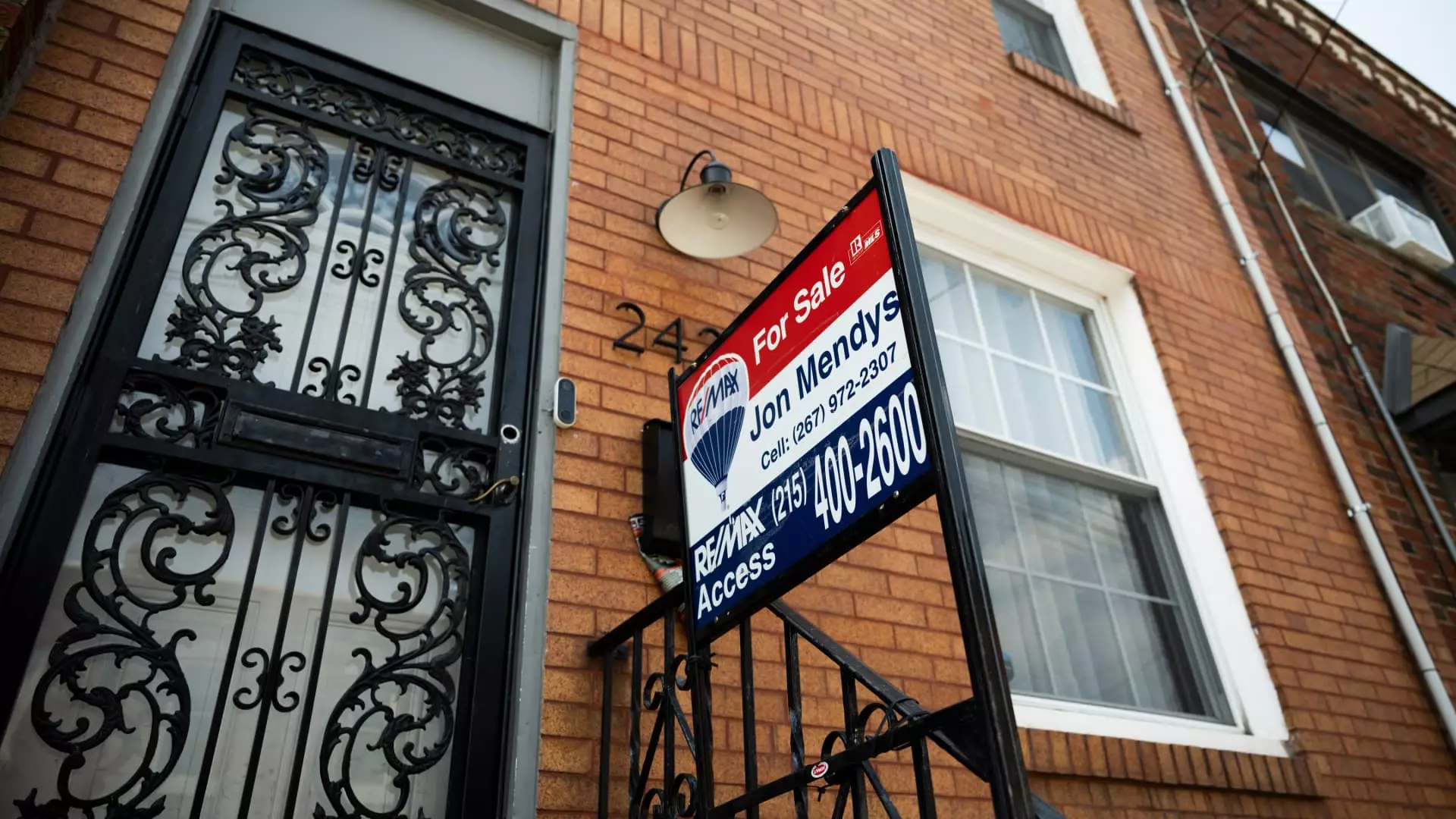The U.S. housing market finds itself in a precarious position as it navigates the hurdles posed by high mortgage rates, persistent price elevation, and a constrained supply of available listings. Recent reports indicate a notable decline in home sales, reflecting the ongoing struggles that potential buyers face in a complicated economic landscape.
Recent data from the National Association of Realtors (NAR) reveals startling trends within the housing sector. In January, sales of previously owned homes experienced a decline of 4.9%, landing at an annualized rate of 4.08 million units. This drop was deeper than economists anticipated, who had predicted only a 2.6% reduction. While there has been a modest increase in sales compared with January 2024, the overall activity is languishing at levels unseen in nearly 15 years. This situation underscores the floundering demand despite a temporary reduction in mortgage rates toward the end of 2023, which may have influenced contract signings in the final months of the year.
Lawrence Yun, the chief economist at NAR, articulates that mortgage rates have remained frustratingly high for an extended period, despite the Federal Reserve’s attempts to alleviate borrowing costs through interest rate cuts. The resulting effect is compounded housing affordability issues that deter many potential buyers from entering the market. Consequently, the market dynamic is strained, as prospective homeowners grapple with both high prices and high borrowing costs.
The inventory landscape has recently shifted with an increase in homes available for sale. As of January, the number of homes on the market rose to 1.18 million, marking a 3.5% rise compared to December and a significant 17% jump from January 2024. Yet, even this influx does not signal a shift toward a balanced market. The current supply corresponds to a mere 3.5 months’ worth of inventory at prevailing sales rates, starkly short of the six-month threshold that indicates equilibrium between buyers and sellers.
This continuing imbalance exerts upward pressure on home prices. The median home price in January reached $396,900, climbing 4.8% from the previous year and setting a record for January. Such prices echo across all regions tracked by NAR, highlighting a nationwide trend of price increases that uncomfortably coincides with stagnating sales and waning affordability for average buyers.
The slightly improving inventory conditions have not invoked an uptick in first-time buyers, who make up only 28% of total sales—a figure that remains stagnant compared to historical averages, which hover around 40%. This persistence of low participation highlights the ongoing challenges that new entrants undergo in an expensive and competitive market.
Interestingly, all-cash transactions constituted 29% of sales, a figure historically robust yet down from 32% the previous year. This statistic suggests that, while investment from affluent cash buyers continues, many segments of the market (especially first-time buyers) are not gaining traction.
Interestingly, a stark divide has emerged within market segments. Sales of homes priced below $250,000 saw a year-over-year decline of 1.2%, while properties exceeding the million-dollar benchmark experienced a remarkable surge of nearly 27%. This growing disparity indicates that higher-income buyers are better insulated from the market’s challenges, while lower-income sectors bear the brunt of affordability issues.
Despite the increase in inventory and a slight easing of mortgage rates, buyer engagement remains disappointing, as noted by Realtors reporting a lack of foot traffic in January. “Realtors are putting more signs up, but the buyers are not coming,” Yun observes, signaling a critical point in the market dynamics as consumer sentiment remains cautious.
The U.S. housing market is at a crossroads. While some factors suggest potential recovery, systemic challenges—especially concerning affordability and buyer engagement—present substantial hurdles. Until mortgage rates stabilize and prices become more accessible, the burden will likely continue to weigh heavily on both new and experienced buyers navigating this challenging landscape.

